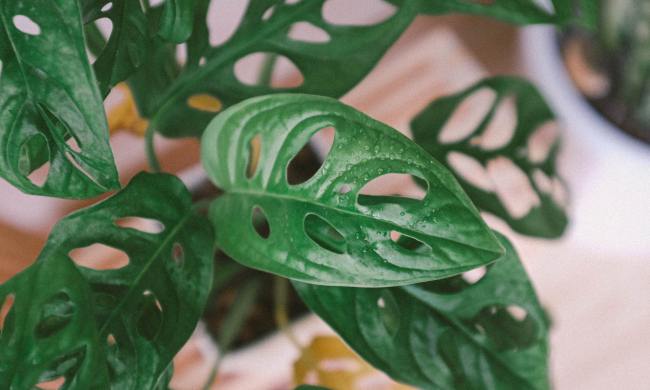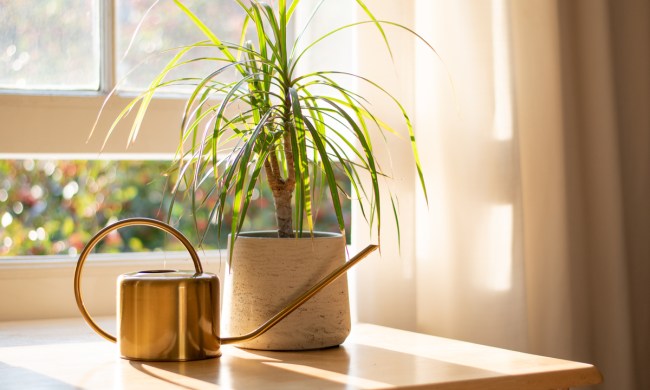
Did you know begonias originated in a tropical climate? They thrive best in places with higher humidity and plenty of moisture, making their overall care a little bit different than that of a regular houseplant. Watering them properly is a key part of begonia care, as they can easily dry out and wilt. Keeping your begonia healthy through regular watering is essential to keep them blooming, but overwatering can pose a threat as well. If you want to learn how often to water begonias then this guide is for you.

How often should you water begonias?
If you’ve never had one before, you’re probably wondering how often to water begonias. Begonias have different watering needs depending on how old they are. Here's what to do:
Step 1: Keep the soil moderately moist for the first couple weeks as the begonia matures.
Step 2: Be careful not to overwater it.
It’s always good to keep your plant in a pot that has good drainage, so when the water starts to come out at the bottom, you’ll have an indicator to stop watering.
Step 3: Test the soil to see how dry it is before watering mature begonias.
If you stick your finger in and the soil is dry to your first knuckle, you’ll know that it’s time to water your begonia. This little trick will also help prevent you from overwatering the plant.
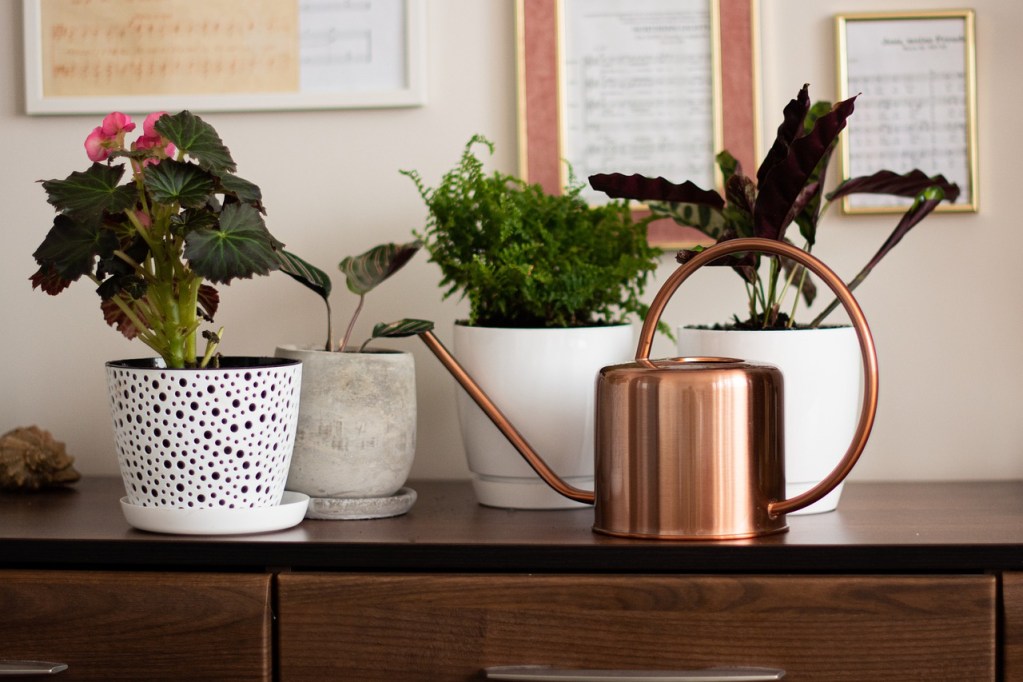
How do you water indoor begonias?
Luckily, the same rules for watering outdoor begonias work when you’re watering begonias indoors. In a pot with good drainage, wait to water the begonia until the top portion of the soil is dry and be wary of overwatering. Having a pot with good drainage will allow excess water to drain from the soil and prevent the plant from sitting in stagnant water.
Like other indoor plants, begonias enter a dormancy period in the colder months. During this time, you’ll want to water only once every three to four weeks to avoid similar situations with the plant drowning in water. Once growth begins in the spring, you can resume the regular watering schedule.
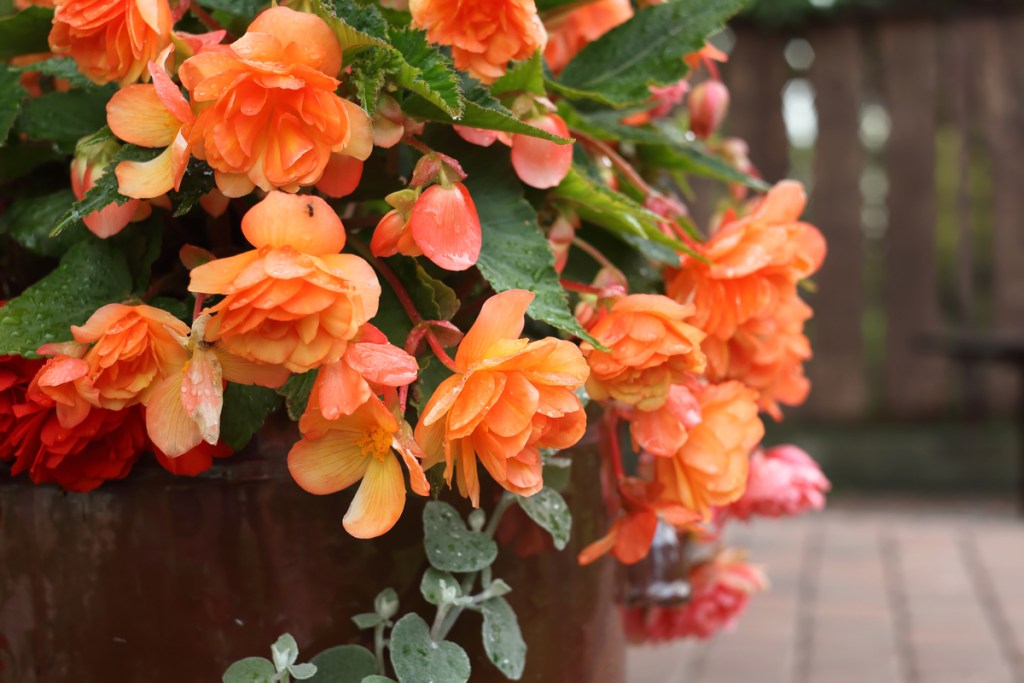
Do begonias prefer sun or shade?
The ideal condition for begonias is usually a mixture of partial sun and partial shade (typically morning sun and/or filtered lighting). Many windowsills or well-lit sun spaces in a home or apartment can accommodate this well; however, if you only have a form of indirect lighting, not to worry. Many begonias can withstand full shade/indirect lighting. They just won’t be as full as their counterparts grown in a mixture of light and will often have fewer flowers.
If you have an outdoor space, like a small patio or a garden, you can also place your indoor-grown begonias out there to absorb sunlight and bring them in as-needed if your windows don’t allow for proper conditions.
Keep in mind that it is possible for your begonia, like any other plant, to be in too much sun. Sun damage is often indicated by wilting, bleached/yellowing leaves, and stunted growth. If your begonia shows any of these signs, try moving it to a different location. The damaged parts of the plant can’t be fixed, but the begonia should be able to recover over time.
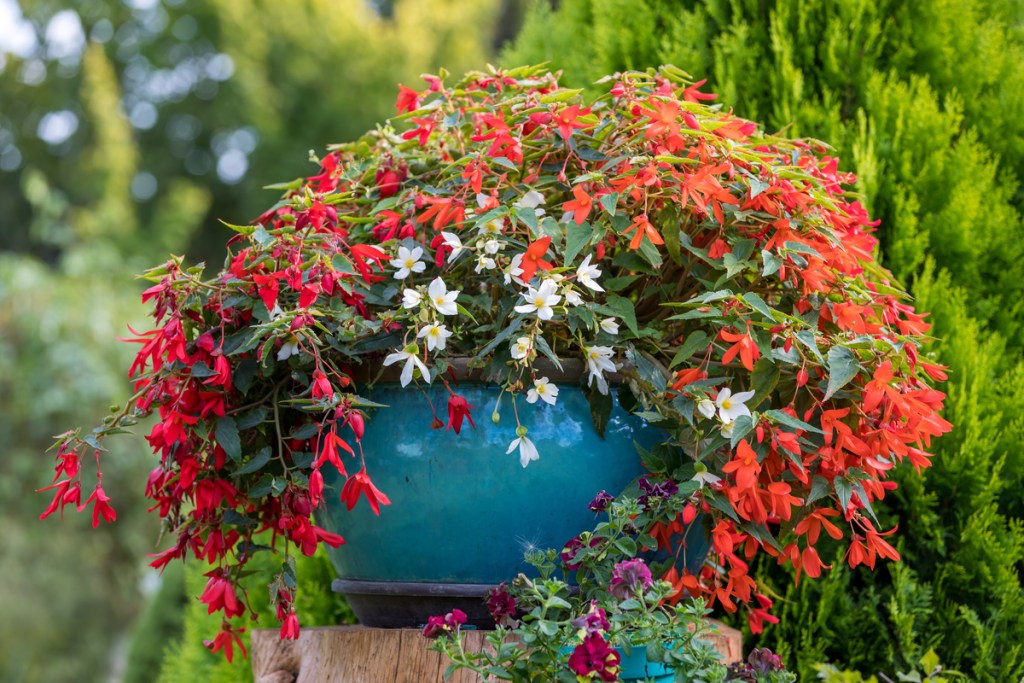
How to keep begonias blooming all summer long
One of the best ways to encourage blooming in begonias is to follow the proper watering and conditions tips as best you can. By providing your begonias with the best care possible, you’re most likely to see more blooms for a longer period of time. You can also fertilize your begonia once enough to ensure it has the proper nutrients needed for beautiful blooms.
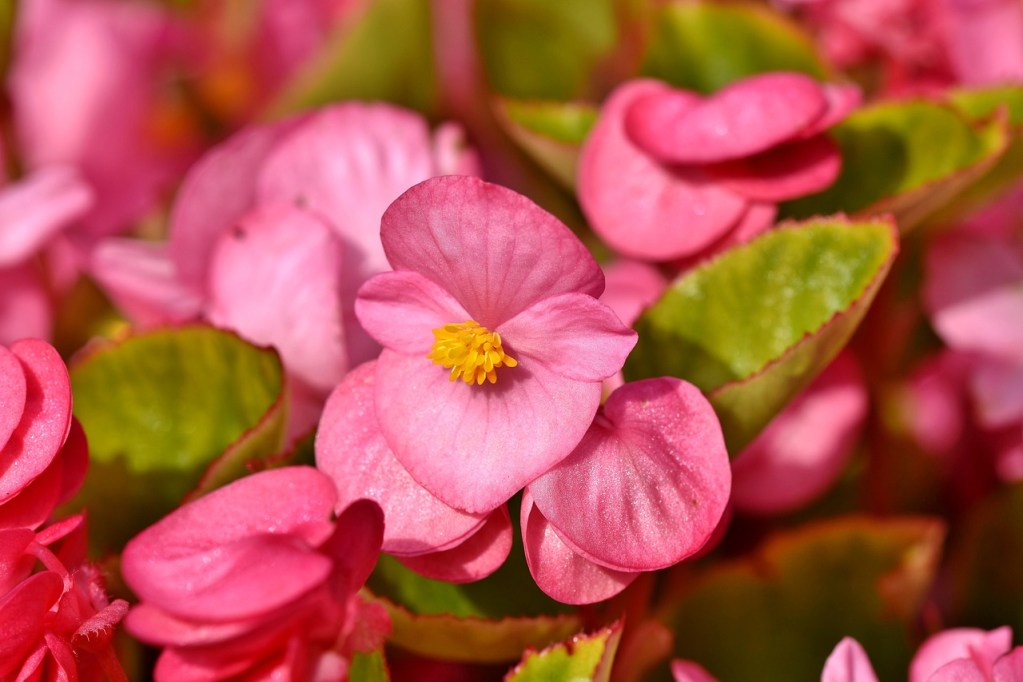
Should you water your begonias from the top or the bottom?
Now that you know how often to water begonias, you may be wondering what the best method for watering them is. Top watering is the most common method of watering, and it just means pouring water into the soil from above. Bottom watering involves setting a potted plant in a couple inches of water and letting the soil absorb water through the drainage holes.
Both methods have benefits, and begonias enjoy both methods of watering. In fact, incorporating both methods into your watering routine can benefit your begonia greatly. Top watering helps to flush excess salts and nutrients out of the soil, reducing the risk of overfertilization. Bottom watering reduces the risk of fungal infections, since the water does not touch the leaves. However, bottom watering can only be done with potted plants. If you begonias are planted in the ground, you'll have to stick with top watering.
If you're unfamiliar with bottom watering, here's what to do:
Step 1: Fill a tub or basin with 2 - 4 inches of cool water.
The water should cover the bottom of the pot without submerging the entire pot. Remember, the water will only be absorbed through the drainage holes, so that's all that really needs to be covered.
Step 2: Place your potted begonia in the water.
If the pot is light and you're worried about it tipping over, you can place a few heavy objects around it to hold it up. As long as the water can flow between the objects it won't interfere with the watering process.
Step 3: Leave your begonia sitting in the water for 15 to 30 minutes.
Small plants only need 15-20 minutes, while large ones will need 20 - 30 minutes. You don't need to watch your begonia the entire time, but if you leave the room be sure to set a timer so you don't forget to take it out. Plants can still be overwatered from bottom watering.
Step 4: Remove your begonia from the water and return it to its usual spot.
The bottom will be damp, so if your begonia typically sits on or near something that can be damaged by water it's a good idea to set it on a saucer or plate.
Step 5: Water your begonia from the top instead of the bottom every few weeks, to flush out any salts or unused nutrients that have built up from fertilizers.
You can switch between top and bottom watering more frequently if you prefer, but your potted begonia should go no more than 6 weeks without top watering.
Now that you know how often to water begonias as well as the best method to do so, your begonia will be thriving in no time. There’s no guarantee that your begonia will bloom all summer long, but proper, diligent care is the best way to ensure that you have a happy, healthy plant.

